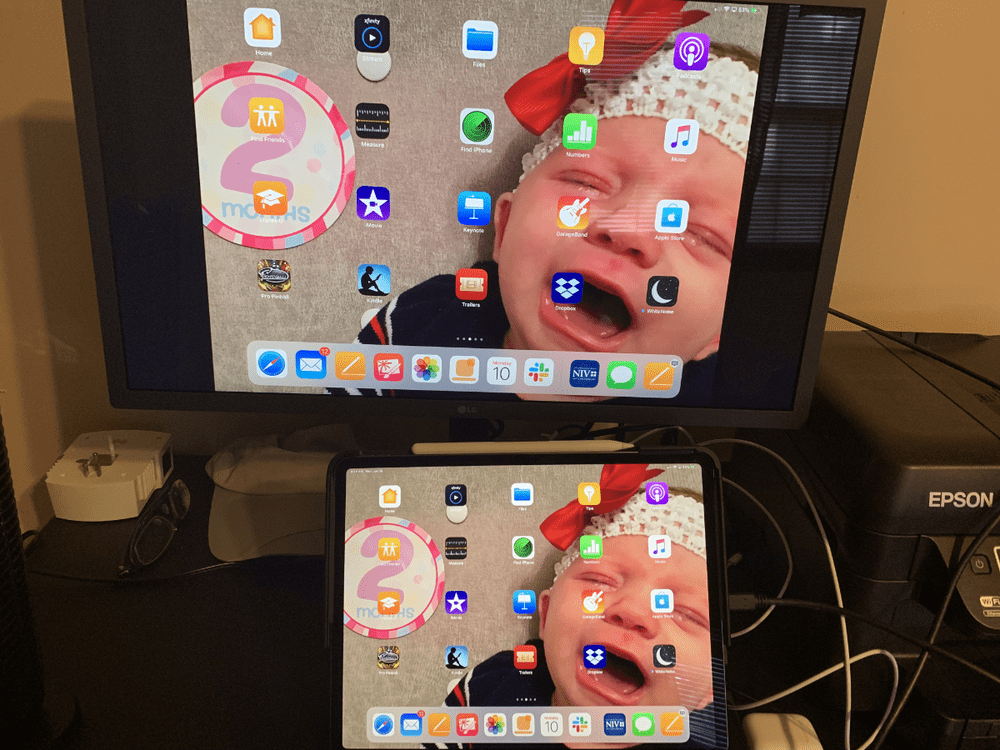Unless you have $5,000 (gasp) for Apple’s upcoming Pro Display XDR and another $999 (bigger gasp) for Pro Stand, the only new Mac compatible display you can buy at Apple retail stores and the company’s online stereo is the LG UltraFine 4K Display.
At $699.95, it’s not inexpensive and it certain pales in comparison with the screen on a 5K iMac, but it’s a decent enough monitor that will do until (if?) Apple introduces new displays that the rest of us can afford.
With a 3840-by-2160 resolution, the 23.7-inch LG UltraFine 4K Display falls somewhere between the discontinued 21-inch LG UltraFine 4K and 27-inch LG UltraFine (hey, Apple, why the latter no longer available?).

First, let’s look at the good aspects of the new LG display. A single Thunderbolt 3 cable (which is, conveniently, included) provides up to 85W of charging power to a MacBook Pro or MacBook Air with Thunderbolt 3 (USB-C) ports. The display has two Thunderbolt 3 (USB-C) ports, and you can use one to connect to another 4K display. That’s one more Thunderbolt 3 port than the previous two LG UltraFines provided, which is nice. Three downstream USB-C ports (5 Gb/s) offer additional connectivity and power to compatible devices and accessories.
The built-in stereo speakers are okay, but if you’re going to be listening to your music or watching movies a great deal of time on the LG monitor, you’ll probably want to add external speakers.
The UltraFine 4K Display features a 23.7-inch IPS panel, P3 wide color gamut, and 500 cd/m² of brightness. With over eight million pixels, it has four times more than a typical 1080p HD display, so you’ll see bright, vibrant images and videos. And the LG UltraFine Display will also work with the True Tone and Night Shift features on compatible Macs.
However, the 3840 x 2160 60Hz UHD display falls between the LG UltraFine 5K Display and the 21.5-inch display. Since it’s a larger unit with less resolution than the 4096 x 2304 21.5-inch UltraFine, it sports a less dense PPI of 186 versus 219, so its display is noticeably less sharp than the older UltraFine displays or the 5K iMac.
The default “Retina” resolution is 1920 x 1080 pixel-doubled, so text and images are sharp, yet large enough to be comfortably viewed at normal viewing distances. Additional scaled resolution options include 3360 x 1890, 3200 x 1800, 3008 x 1692, 2560 x 1440, etc.
The included arm can pivot and move up or down approximately 4.5-inches, for a top viewing height around 21-inches. The left or right side of the monitor head can also move a little allowing it to level the display if it’s sitting on an uneven desktop surface.
One thing I really like is that you can connect not only a Mac, but an iPad Pro to the display. With macOS (10.14.5 or later) and iOS integration, you can control volume and brightness on your 4K display without the need for physical buttons. Which is good because there are no physical buttons on the UltraFine 4K.
Not even a power on/off button. The display immediately powers up when you connect your Mac or iPad Pro.
There’s an adjustable stand for adjusting the monitor to your needs. You can also disconnect the stand and mount the display on a VESA arm using the provided VESA cover.
One downside of the LG UltraFine 4K Display is its bland appearance. It’s not ugly, it’s just ….. boring. It’s made of plastic, which feels fairly durable. Compared to other computer displays that you can buy, it’s handsome enough. But sit the LG UltraFine 4K next to an iMac, and comes off as butt ugly.
Another downside: the display doesn’t have a camera, so you can’t use it for, say, FaceTime calls.
Overall, I like the LG UltraFine 4K Display, but I don’t love it. I’ll keep hoping that in addition to its Pro Display, Apple will roll out more affordable 21-inch and 27-inch displays before the end of the year.
Apple World Today Rating (out of 5 stars): ★★★★
